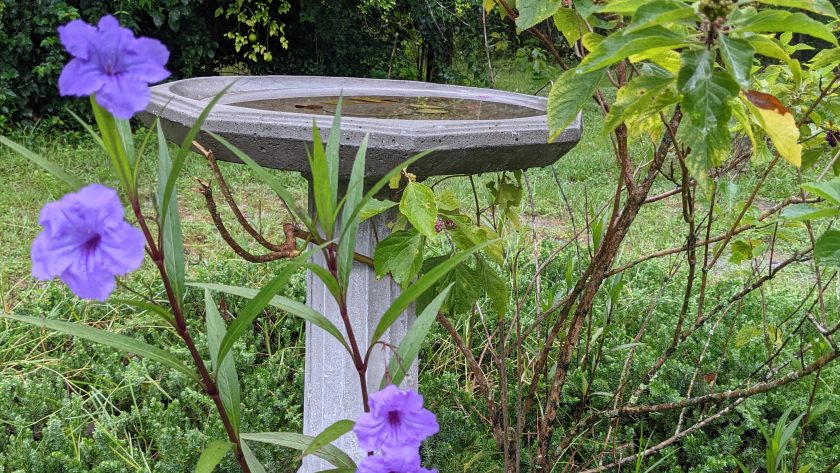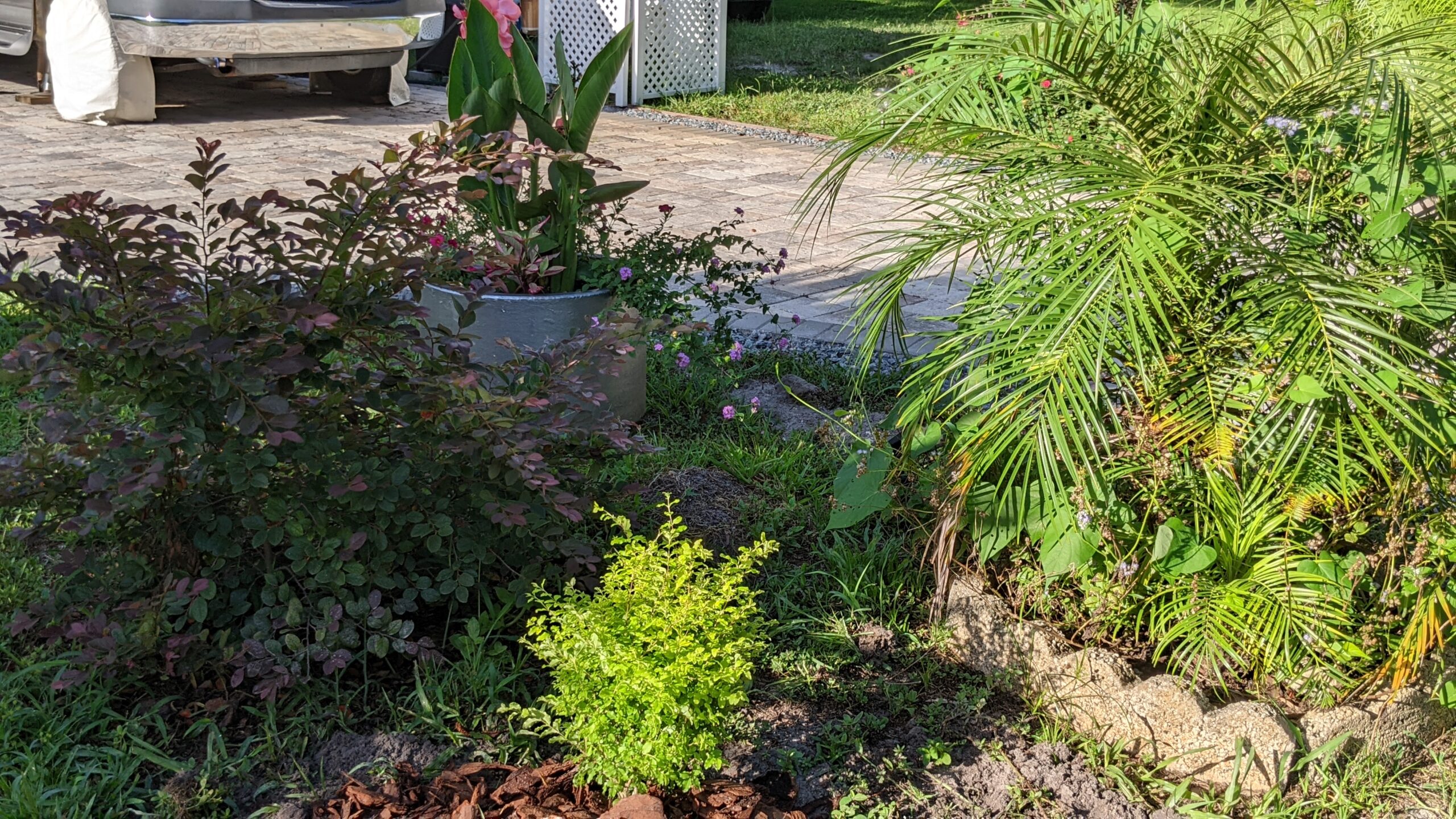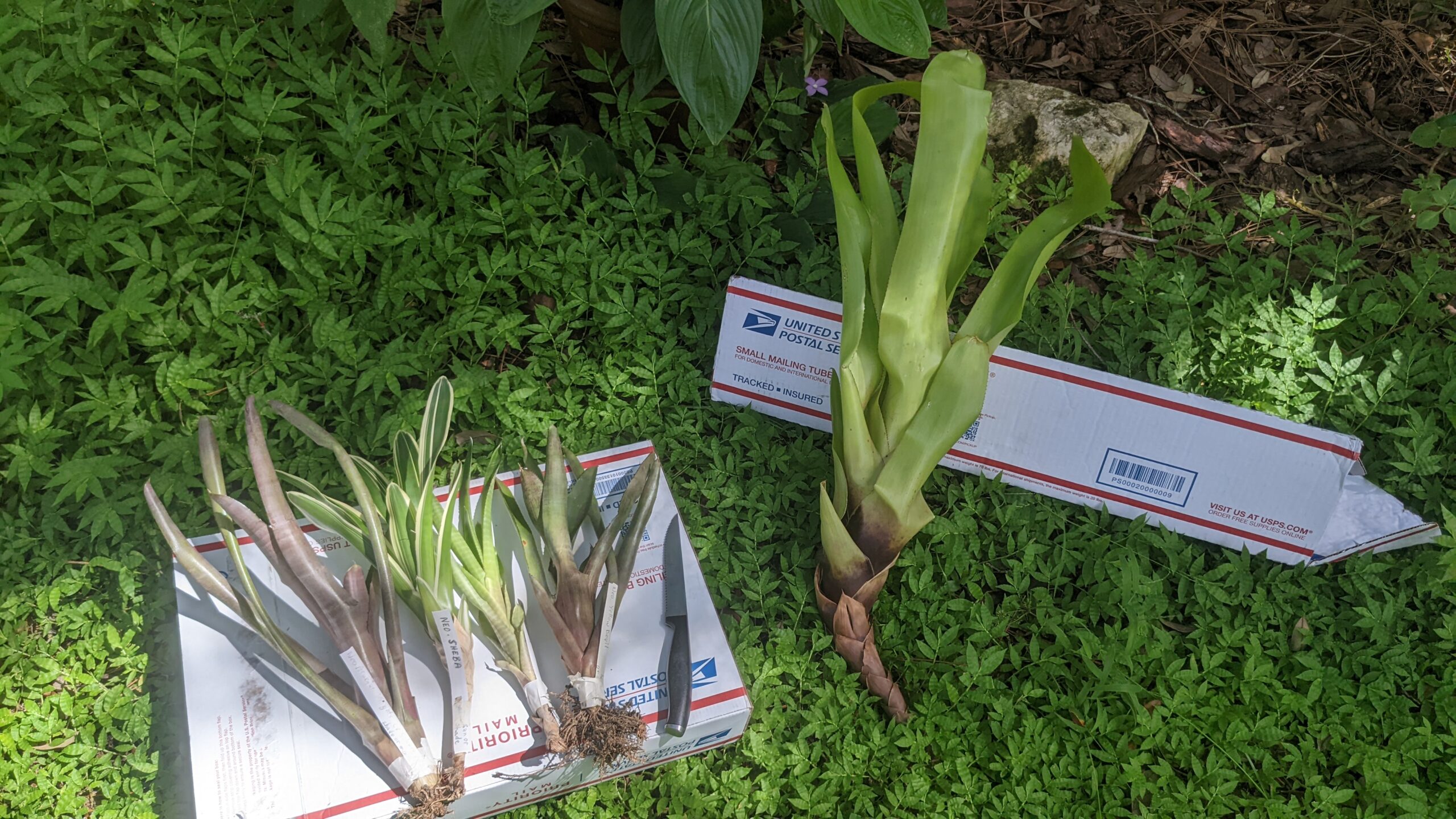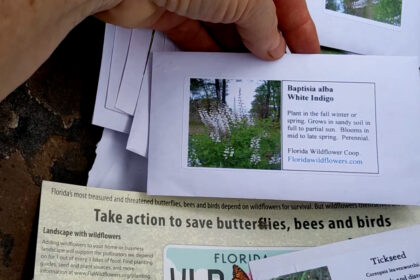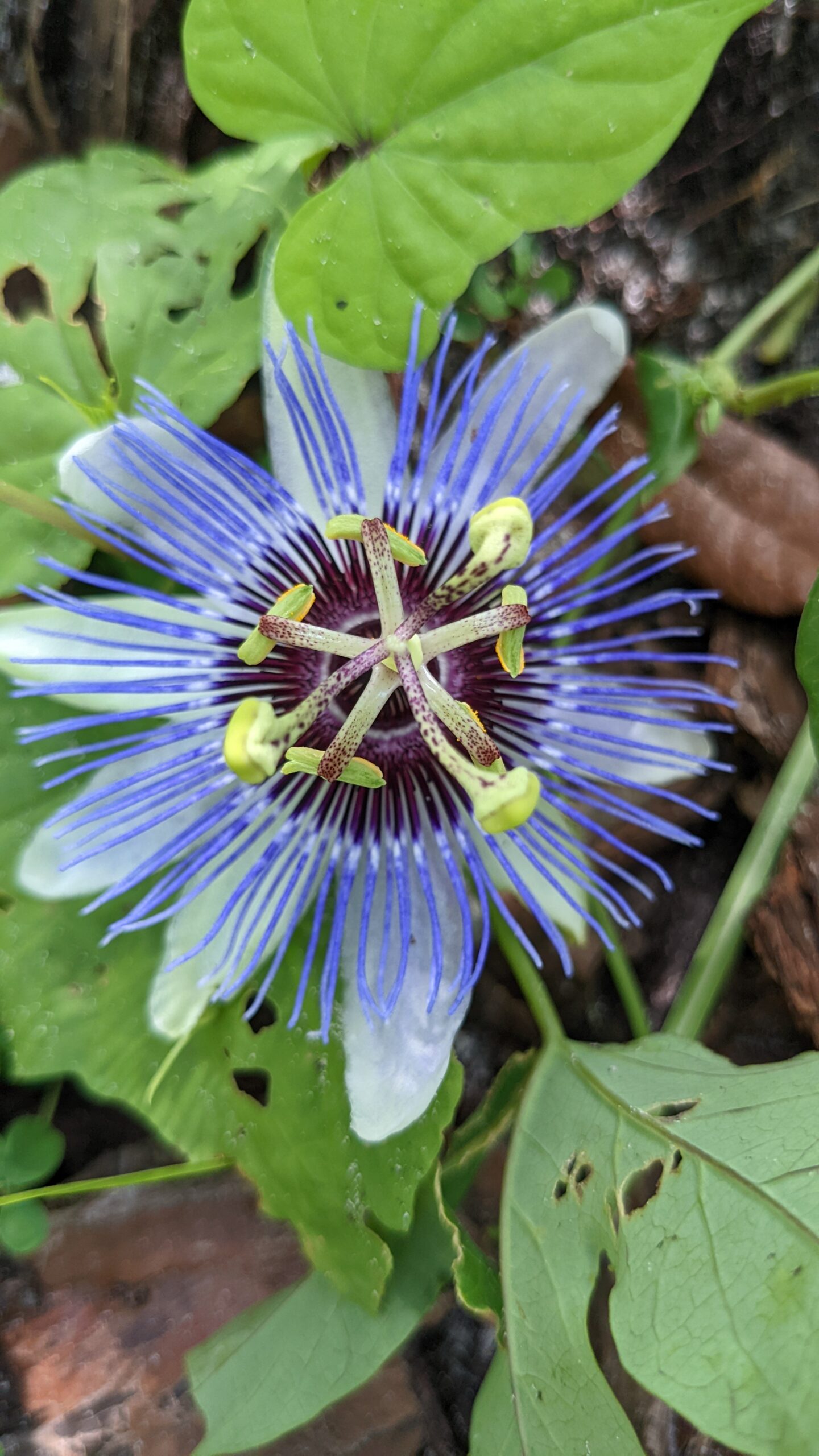There are several plants I have in my yard that are deemed noxious weeds. Several of them I planted myself through ignorance. Others just popped up mostly from either horse hay, tree mulch from the electric company contractor, or they came here “naturally” through birds and other animals and/or they were already established when I purchased the property.
Several of these problematic plants are trees. Since I have 10 acres, they just seem to spread everywhere and they are very tough to control. Thankfully, I don’t have Brazilian Pepper or Air Potato (famous last words) but there are a few like Chinese Tallow, China Berry, Cogongrass, Bay Laurels, and Camphor Trees that I struggle to remove.
Skunk vine is another invasive that is all over my property and somewhat problematic but not as terrible as some of the others on my list. As prolific as it is, I just assumed it was another pushy native like smilax, Virginia Creeper or grapevines. Fortunately, if you’re an urban or suburban gardener you won’t have the issues with these plants that we all have out in the backwoods. The problem here is that the properties are expansive and mostly unmanaged. The bulk of my neighbors wouldn’t know an invasive plant if it jumped up and bit them (which many Florida plants do!)… and so they leave them to grow unfettered… and they oftentimes escape to my yard.
There are, however, many plants sold in the big box stores, online, and even in local nurseries that sell what are classified as invasive plants. There may be confusion as some of these may be sterile varieties and may not be considered invasive. Some, like lantana, have native cousins but may also interbreed with them causing issues. Please use caution when planting the following in the landscape:
| Wedelia | Japanese Honeysuckle |
| Orchid Trees | Pampas Grass |
| Mimosa Silk Tree | Silverthorn |
| Lantana Camera (non-sterile, non-native variety) | Chinese Wisteria |
| Mexican Petunia (particularly Ruellia that seeds) | Chinese Privet |
| Invasive Sword “Boston” Fern (with round tuberous roots) | Golden Bamboo |
| Nandina or Heavenly Bamboo (domestica and non-sterile forms) | Golden Rain Tree |
| Asparagus Fern | Wax Begonia (yeah, I was surprised too!) |
| Strawberry Guava | Dutchman’s Pipe/Calico Flower |
| Oyster Plant | Fountain Grass |
| Purple Heart/Queen |
I recently purchased five Silverthorn bushes to plant as a hedge from a local nursery and just found out about its aggressive nature myself. A neighbor up the trail planted probably 30 of them and they became a beautiful 10 foot hedge pretty quickly. Had no clue they were invasive. I supposed plants at the nursery wouldn’t be invasive… but, lo and behold, some of them are.
I had heard that Bleeding Hearts are invasive in Florida but none of the scholarly sites I researched validate that. I rely on University of Florida’s IFAS: Institute of Food and Agricultural Sciences. Some Master Gardener sites here even sell them. So my Bleeding Hearts are fine.
Another plant I thought I had heard was invasive is English Ivy. Thankfully, that is not on the invasive list here in Florida (as of this writing) but you may want to use caution when planting it. In my yard it is a thick ground cover and hangs from trees like the hanging gardens of Babylon.
#1. Tropical Soda Apple
While many of the plants on this list present a challenge, the one I despise the most, I seem to have eradicated. When I first moved here more than twenty years ago, the property was rife with them. Not only do they spread prolifically, they hurt! There is no part of this plant you can’t touch without getting bitten by the omnipresent thorns (even the leaves are covered in them!), save the roots. The best way for me to eliminate them was to dig them out with a shovel and grab only the roots with a gloved hand. Then onto the burn pile they went! Since it grows three feet tall by three or four feet wide, it’s tough to grab without getting punctured in the arm or leg. My entire horse pasture was covered in them as they do well in sun and shade and in total sand. Their thorns make them recognizable but so many thistles, sandspurs and nettles here bite. The leaf shape with thorns is distinct and so too are the watermelon patterned gooseberry-like pods with 45,000 seeds each that will proliferate like rabbits should you leave one behind. This is such a terrible plant it is on the federal invasive weed list.
#2. Chineberry, Camphor Tree and Other Noxious Trees
Lord do I despise this tree. Step-dad loves it… but he loves a lot of invasives. This tree, along with Laurel Fig (that looks like a Bay Laurel from which we get the spice bay leaves), some sort of aggressive holly I haven’t identified as yet, Chinaberry and Chinese Tallow are going to be the death of me. You can tell camphor because it smells like the essential oil when you crush the leaves. These spring up everywhere so we really have to walk through every inch of the woods, off the beaten path, with a chain saw to get rid of the ones that seem to crop up overnight. Once you cut them down, you see all the offspring around the base. And, most of the time after you cut them down, they just spring right back up for the remaining trunk. They grow tall and fast.
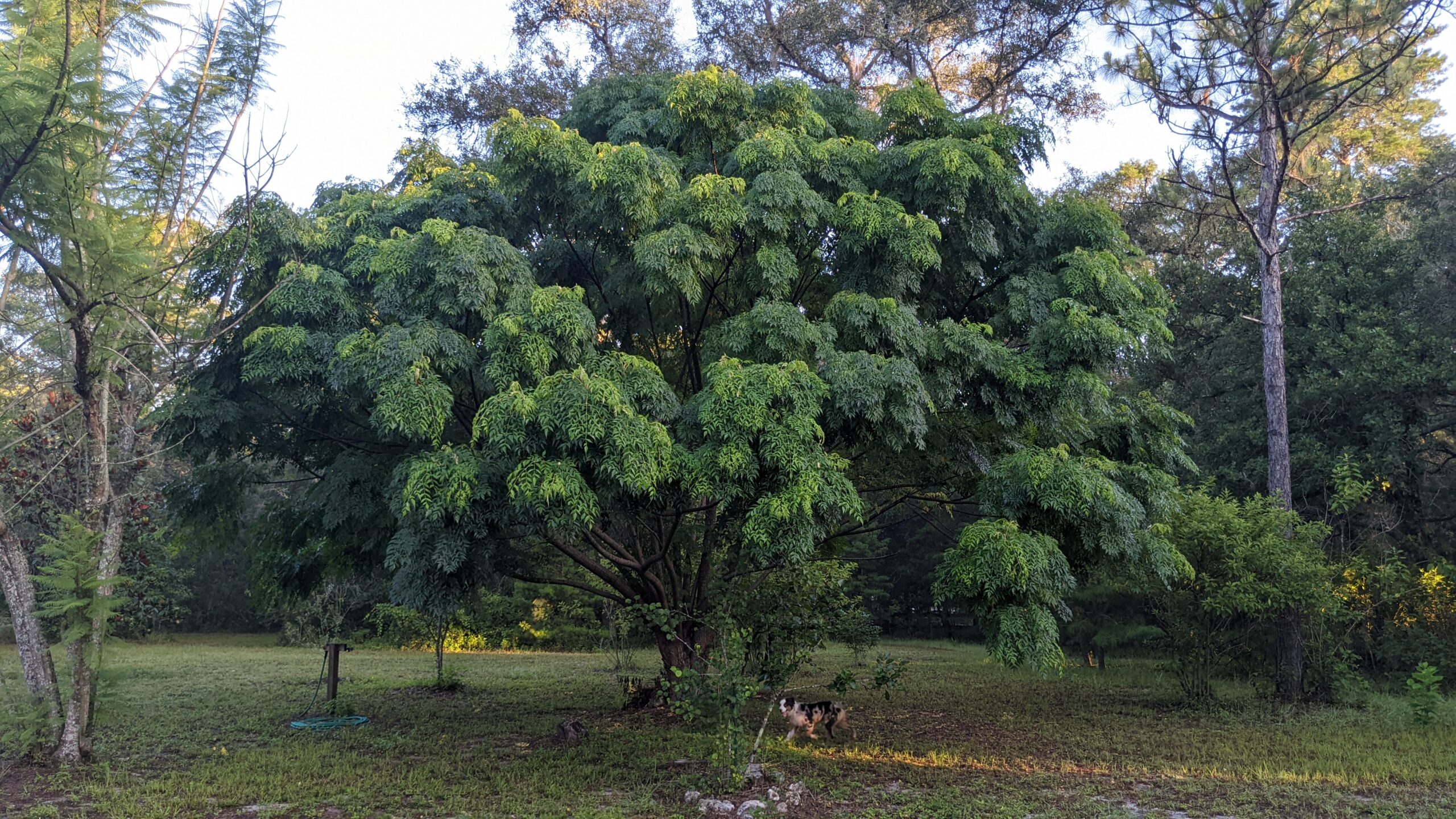

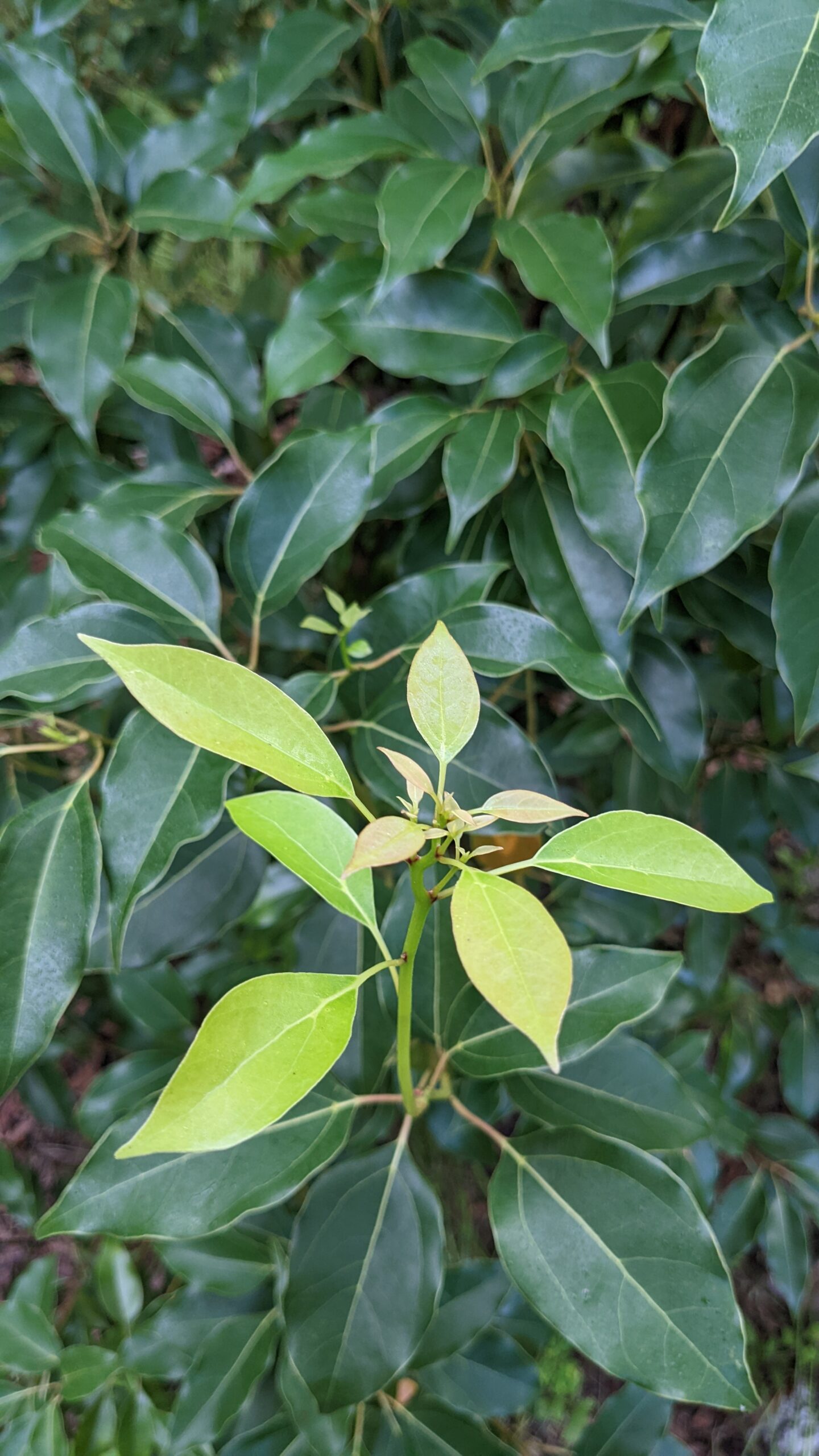
#3. Wedelia
Ok. This one makes me sad. I love Wedelia because it is a beautiful ground cover that quickly fills under the sunny side of a tree where nothing else will grow. It looks like beach daisies with perky yellow flowers that bloom all summer long. You can pull a piece out, stick it in the sand, and a lush new patch of beautiful flowers shows up in a few weeks. It seemed great especially for folks who don’t have green thumbs. It does get thirsty in dry spells and it dies back in the winter so I haven’t had a problem controlling it. However, it is on the invasive list so it’s a no go.
#4. Sword Fern
I made the mistake of getting these from a man I drove by who was pulling them out and tossing them in the garbage pile. I should have kept driving. Being from N.J. where Boston ferns make gorgeous hanging baskets for shady porches, I thought, oh no, how can he just toss these in the trash?!?!?
Well, I planted a small clump in the back woods, and another small clump in my ginger area, and within no time, these ferns spread like wildfire out of control. They are contained only because we mow around the perimeter. I didn’t realize they were on the invasive list until many years later as there is a native sword fern that is not invasive. The way you tell is you pull a clump out and check the roots for tubers. They look like reddish tan gooseberries. If you have them, then your patch is invasive and needs to go! Perhaps you can confine them to a container or a basket, but they really shouldn’t be planted in the landscape.
#5. Surinam Cherry
This is one the permaculturists pimp as a self-sustainability crop. Permaculturists typically organically grow “permanent” (read perennial) food gardens with companion plants. Surinam Cherry is a messy tree that the birds and squirrels get drunk from consuming the fermented fruit that litters the ground. Have you ever seen a squirrel fall from a tree. Bet he enbibed on Surinam cherry. lol. I have Barbados cherry that is really a compact bush about 4-5 feet tall and about as round. My step-father loves the astringent taste of the fruits and usually takes all the cherries before anyone else gets to them. Seedlings do pop up from fallen fruits quite readily.
#6. Mexican Petunia
Here’s another they sell in the stores. The problem is, there are several varieties that are sterile and, hence, not invasive. There is also a native variety…also not invasive. I have a few of Mexican Petunias that grow marginally near my birdbath and a few others that popped up in the shade under my Pagoda plant. At one point, my stepfather retrieved a few clumps from an old neighbor who was throwing them out and planted them along the fence near his place (in my yard). Ours don’t seem to be invasive but there’s a lesson to be learned here… if someone is throwing plants out, DO NOT TAKE THEM! 😉
#7. Silverthorn
Well, this one is a bummer too. I just purchased seven three gallon sized containers from a local nursey. Not sure why they have invasives they sell to the public. I suppose people like them because they are silvery but also they grow tall quickly to create a dense privacy hedge.
#8. Torpedo Grass
This vile weed propagates through underground runners that are not easy to pull up by hand.
#9. Skunk Vine
#10. Purple Queen and Oyster Plants
There are invasive types of plants in the tradescantia or spiderwort family that includes oyster plants, purple queen, and wandering jew. My oyster plants turn to mush in the heat and my purple queen dry out very quickly. I must not have the invasive strains as I find it difficult to keep them alive.
